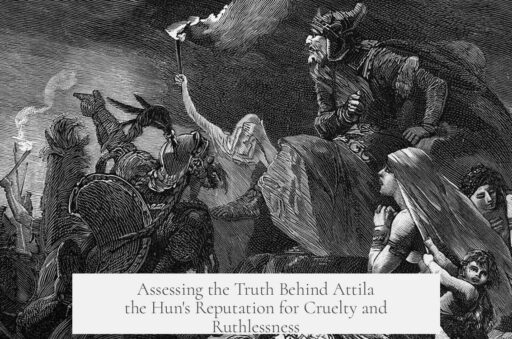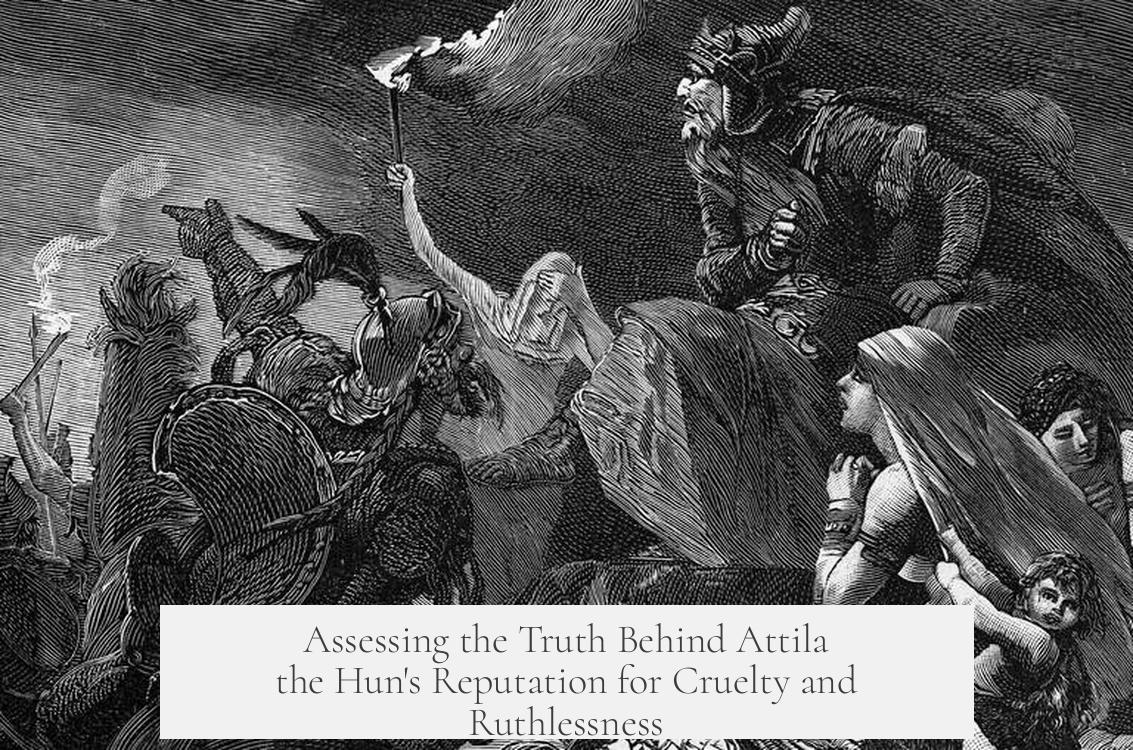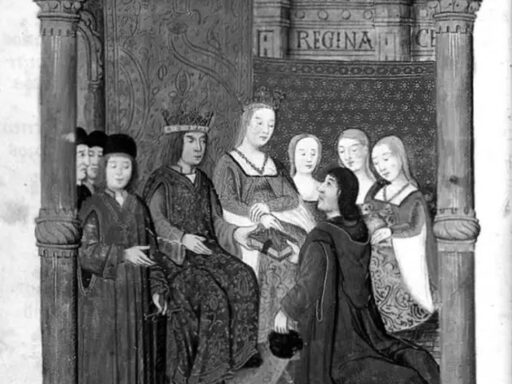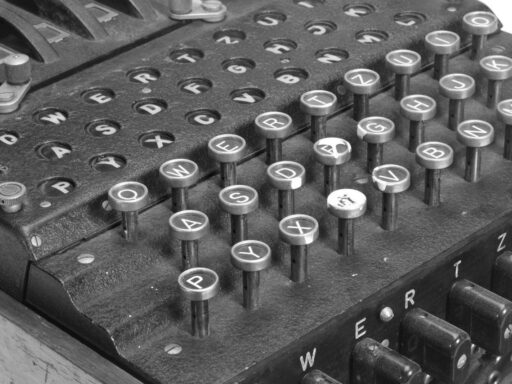Attila the Hun is often perceived as exceedingly cruel and ruthless, but historical sources provide a more nuanced picture of his character and actions. While Attila’s military campaigns were devastating, and he earned notorious epithets like “Scourge of God,” his personal ruthlessness was likely exaggerated or misunderstood. This article explores Attila’s reputation, his leadership, military impact, and the historical context to clarify how cruel and ruthless he truly was.
The title “Scourge of God” first appears centuries after Attila’s death, in the thirteenth-century collection The Golden Legend. According to this, Attila called himself “the scourge and rod of God,” suggesting divine punishment rather than wanton cruelty. Hungarian historians, who view Attila as a foundational national figure, embraced this epithet. Similar ideas about pagan conquerors serving as divine punishment appear in other historical contexts, such as Bede’s view of the Angles.
The Roman historian Jordanes provides one of the closest contemporary descriptions. Drawing on the account of Priscus, a Roman diplomat who met Attila, Jordanes describes him as a man born to “shake the nations.” However, he adds that Attila was “restrained in action,” “mighty in counsel,” and “lenient to those who were once received into his protection.” This suggests a leader capable of mercy and strategic governance, not simple brutality.
Attila’s alleged personal cruelty sometimes centers on accusations like murdering his brother and co-ruler, Bleda. Jordanes claims Attila killed Bleda to consolidate power, but this is not confirmed by other sources. Indeed, Priscus met Bleda’s widow years later, indicating she survived and governed a community, which raises questions about the murder claim. Additionally, Priscus notes Attila’s affectionate side, describing him fondly interacting with his son Ernakh.
Attila’s military campaigns were undeniably harsh. His armies invaded Thrace, Gaul, and Italy with estimated forces around 50,000, though some sources inflate numbers up to 500,000 to emphasize the threat. Chronicles document the sacking of numerous cities like Metz, Trier, and Aquileia. Some archaeological evidence does not show widespread city burnings, but the lack of such evidence is not unusual, as pre-modern warfare rarely leaves clear traces. The devastation was often rural, affecting farmland, villages, and supply sources crucial to Rome’s stability.
| Aspect | Details |
|---|---|
| Army Size | Estimated 50,000 for Gaul invasion; Jordanes claims up to 500,000 |
| Major Cities Sacked | Metz, Trier, Aquileia, and others across Gaul and Italy |
| Methods of Destruction | Destruction of food sources, agriculture, towns, and religious sites |
Attila’s role in the Western Roman Empire’s fall is complex. Historians credit him with causing economic damage, accelerating Roman decline. Despite this, what made Attila truly fearsome was not only what he destroyed but the power and alliances he commanded. According to Priscus, Attila ruled over all “kings” like a hegemon, with others obeying his command without dissent, reinforcing his image as a ruler of unparalleled power.
Attila’s death in 453 from a hemorrhage ended his empire’s dominance. Posthumously, many of the Huns’ subject tribes allied against them and dethroned their rule. Despite their fall, the Huns maintained a formidable reputation, especially due to Attila’s legacy.
| Characteristic | Description |
|---|---|
| Appearance | Short stature, broad chest, large head, wild eyes (Priscus) |
| Leadership Style | Intimidating but calm, strategic and capable of mercy |
| Ruthlessness | Executed enemies by impalement/crucifixion; punished fugitives |
| Military Prowess | Master horsemen; skilled archers; used vast mounted armies |
The Huns’ warfare tactics, built around highly mobile mounted archers, shocked settled civilizations. They seized loot, people, and land relentlessly. They frequently destroyed enemies’ food supply and attacked all, regardless of status, including religious figures. Still, the image of Attila as simply a bloodthirsty barbarian lacks nuance.
Attila’s capital was a wooden city, thought to be in modern Romania. Despite his fearsome reputation, he lived modestly with wooden cups and simple dwellings, showing a leader focused on function rather than luxury.
Attila’s legacy is marked by fear, and yet he also held a form of justice and governance. The stories of his cruelty blend with accounts of political strategy, personal affection, and complex leadership.
- The epithet “Scourge of God” was applied after Attila’s death and reflected his image as divine punishment rather than sheer cruelty.
- Contemporary sources describe Attila as a strategic and restrained leader, capable of generosity and mercy.
- Accusations of fratricide are not conclusively proven.
- His military campaigns caused widespread destruction, especially in rural areas, but do not always leave clear archaeological evidence.
- Attila commanded a broad coalition of tribes, giving him immense power that threatened Rome significantly.
- His death marked the rapid decline of Hunnic power, but his fearsome reputation persisted.
Was Attila the Hun truly called the “Scourge of God” during his lifetime?
The title “Scourge of God” first appeared centuries after Attila’s time, in the 13th century, linked to hagiographies. It was a later label, adopted especially by Hungarian historians viewing Attila as a significant ancestor rather than a monster.
Did contemporary sources describe Attila as cruel and ruthless?
Roman diplomat Priscus, who met Attila, described him as a formidable leader who loved war but showed restraint, kindness to supplicants, and care for his family. He was feared but not purely cruel in personal behavior.
Is it true that Attila killed his brother to gain power?
Jordanes claimed Attila murdered his brother Bleda, but this is not confirmed elsewhere. Priscus met Bleda’s widow ruling a village later, which casts doubt on the fratricide story.
How devastating were Attila’s military campaigns?
Attila led large armies that ravaged cities and countryside. While some records say cities were sacked, archaeological evidence for total destruction is limited. Rural areas likely suffered more lasting damage due to large troop movements.
Was Attila responsible for the fall of the Western Roman Empire?
Attila’s actions caused economic damage and presented a major threat, yet historians see his role as limited in the empire’s fall. His power unified many tribes into a strong force that terrified Rome but was not the sole cause of its collapse.



